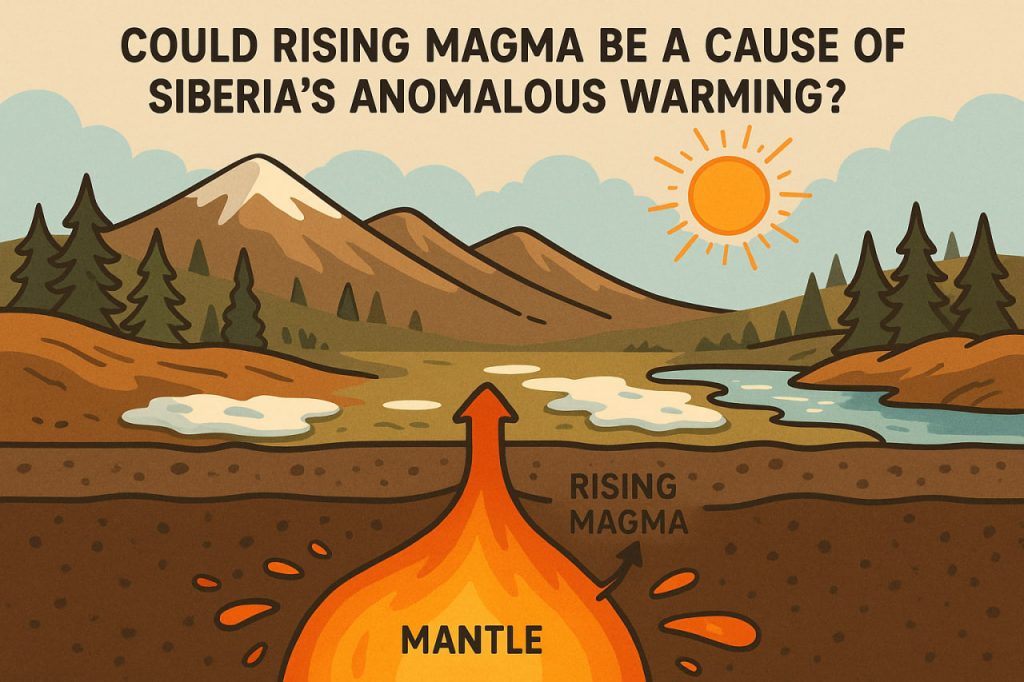Siberia, one of the coldest inhabited regions on Earth, has been experiencing anomalous warming at a rate much faster than the global average. While most scientists attribute this primarily to climate change, some geological factors — such as magma movement beneath the Earth’s crust — may also contribute locally. This raises the question: can rising magma play a role in heating parts of Siberia?
The Background: Siberia’s Accelerated Warming
In recent decades, average temperatures in parts of Siberia have risen by more than 3°C, especially in regions above the Arctic Circle. Melting permafrost, increased wildfires, and changes in vegetation have all been linked to this warming trend.
The primary explanation remains the Arctic amplification effect, where loss of snow and ice reduces Earth’s reflectivity (albedo), causing more solar absorption. However, unusual temperature spikes in specific local zones have led some researchers to explore deeper Earth-based causes.
Magma and Geological Heat Sources
Magma is molten rock located beneath the Earth’s crust. When it moves upward, even without reaching the surface, it can transfer geothermal heat through the surrounding rock layers.
In certain regions, especially near tectonic plate boundaries or ancient volcanic provinces, this geothermal energy can influence surface temperatures. The Siberian Traps, a vast region of ancient volcanic rock, are one such area.
Could Ancient Volcanic Activity Still Be Heating the Ground?
The Siberian Traps were formed around 250 million years ago during one of Earth’s most massive volcanic episodes. Though these eruptions have long ceased, the region still contains deep crustal fractures and possibly mantle plumes — rising columns of hot rock from deep inside the planet.
While there is no direct evidence of an imminent eruption, residual geothermal heat or slow mantle uplift could theoretically warm localized areas. This might contribute to permafrost thawing, which then releases methane — a potent greenhouse gas that further accelerates warming.
Satellite Observations and Thermal Anomalies
Some satellite thermal maps have shown localized hotspots in Siberian permafrost regions. Though these are often attributed to thermokarst (ground collapse due to melting ice) or human activity (pipelines, fires), undetected geothermal sources may be involved in certain areas.
The Verdict: Local Influence, Global Context
While rising magma or residual geothermal heat may play a role in certain zones of Siberia, it can be the cause of the region’s widespread warming. The scientific community needs to investigate this factor, because an accidental eruption of the Siberian traps could be catastrophic for the entire civilization.
Glossary
- Magma: Molten rock beneath the Earth’s crust.
- Geothermal heat: Natural heat from Earth’s interior.
- Mantle plume: A rising column of hot rock from deep within the mantle.
- Permafrost: Permanently frozen ground found in Arctic regions.
- Siberian Traps: A large igneous province in Siberia, formed by ancient volcanic activity.


